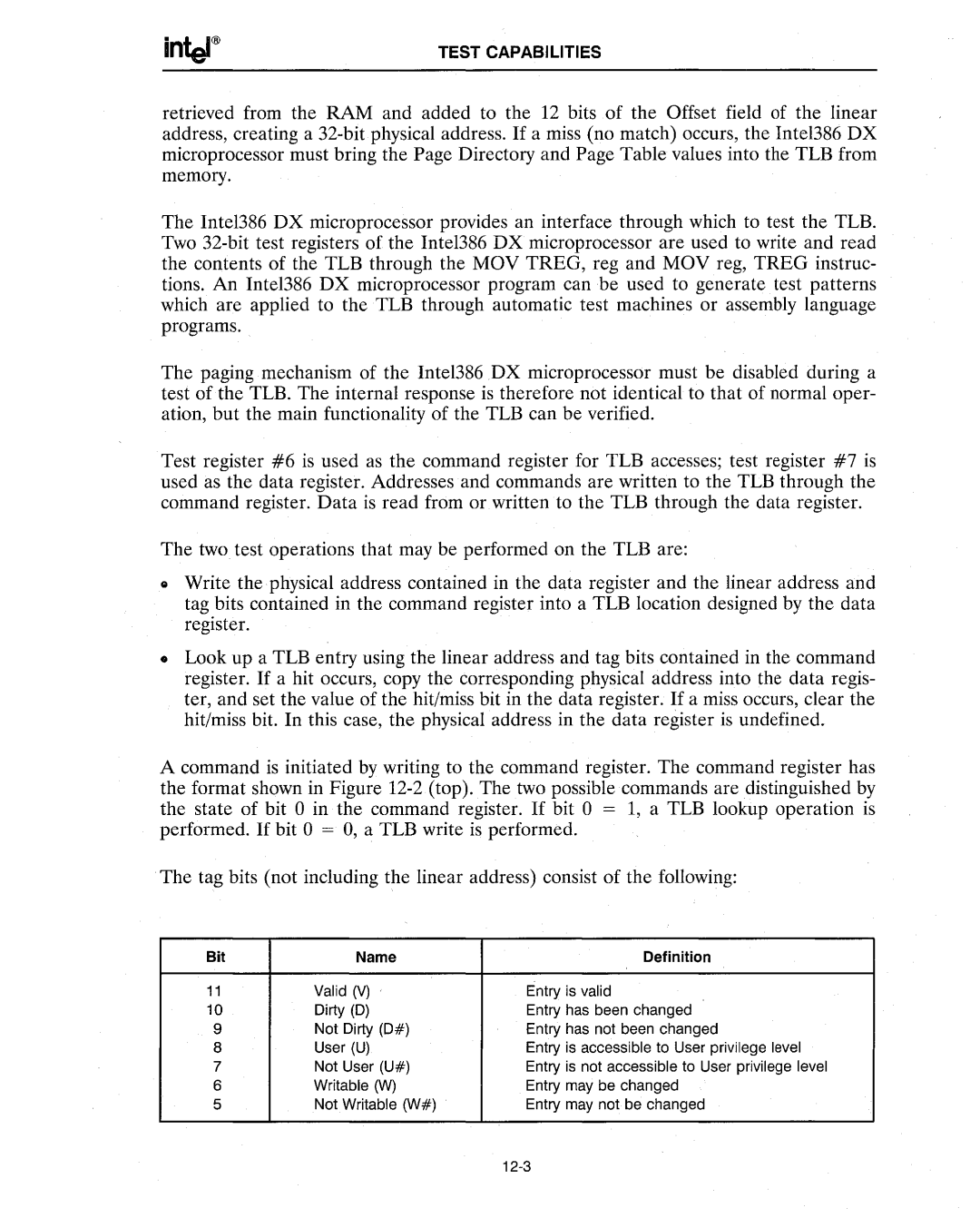
TEST CAPABILITIES
retrieved from the RAM and added to the 12 bits of the Offset field of the linear address, creating a
The Inte1386 DX microprocessor provides an interface through which to test the TLB. Two
The paging mechanism of the Intel386DX microprocessor must be disabled during a test of the TLB. The internal response is therefore not identical to that of normal oper- ation, but the main functionality of the TLB can be verified.
Test register #6 is used as the command register for TLB accesses; test register #7 is used as the data register. Addresses and commands are written to the TLB through the command register. Data is read from or written to the TLB through the data register.
The two test operations that may be performed on the TLB are:
•Write the physical address contained in the data register and the linear address and tag bits contained in the command register into a TLB location designed by the data register.
•Look up a TLB entry using the linear address and tag bits contained in the command register. If a hit occurs, copy the corresponding physical address into the data regis- ter, and set the value of the hit/miss bit in the data register. If a miss occurs, clear the hit/miss bit. In this case, the physical address in the data register is undefined.
A command is initiated by writing to the command register. The command register has the format shown in Figure
The tag bits (not including the linear address) consist of the following:
Bit | Name | Definition |
11 | Valid (V) , | Entry is valid |
10 | Oirty (0) | Entry has been changed |
9 | Not Oirty (0#) | Entry has not been changed |
8 | User (U) | Entry is accessible to User privilege level |
7 | Not User (U#) | Entry is not accessible to User privilege level |
6 | Writable (W) | Entry may be changed |
5 | Not Writable (W#) | Entry may not be changed |
|
|
